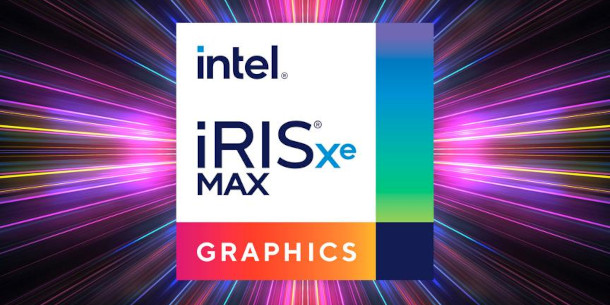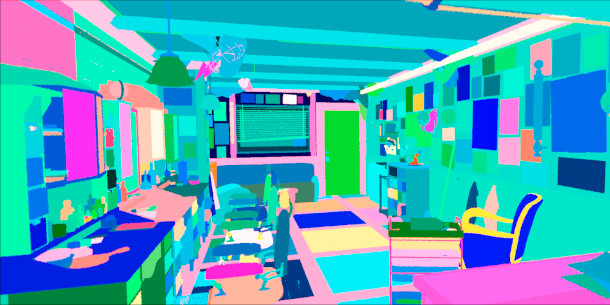Discover 10 key new features from Blender 2.92
The Blender Foundation has shipped Blender 2.92, the latest update to the open-source 3D software.
It’s another significant release, bringing with it the start of the long-awaited Everything Nodes project to introduce a more Houdini-like procedural workflow into Blender.
It’s also a typically wide-ranging one, with new features ranging from new scene layout and sculpting tools to improvements to fluid simulation, rendering, compositing and camera tracking.
To save you combing through the extensive release material, we’ve picked out the highlights from each of Blender’s key toolsets – which, through a little creative counting, comes to a list of the top 10 features.
An introduction to Blender 2.92’s geometry nodes, recorded by VFX artist Rob Dickinson, aka DECODED. The first taste of the Everything Nodes project, they provide tools for editing and scattering geometry.
1. Everything Nodes: new object scattering toolset for scene layout
The most significant new toolset in Blender 2.92 is undoubtedly the new Geometry Nodes system, albeit as much for what it promises to do in future as for what it can actually do now.
It’s the first taste – in a stable release, at least – of the long-awaited Everything Nodes project, which aims to introduce a Houdini-like node-based procedural workflow into Blender.
The ultimate goal is to make it possible to create almost anything in Blender by wiring nodes together, including animations, particle systems and simulations.
However, its initial implementation is rather more limited: the goal was simply to make it possible to scatter instanced objects like rocks or plants across terrain during scene layout.
In practice, it’s a little more wide-ranging than that: as well as scattering and instancing, the 39 new nodes in the toolset lay the foundations of a procedural modelling system.
That means basic utility nodes for querying and modifying the attributes of an object; grouping and ungrouping objects; and transforming, subdividing, and even performing Boolean operations on geometry.
You can get a feel for the range of effects already possible in the video above, which shows the toolset in use to create an animation of fungus growing across the bark of a tree.
2. Sculpting: mesh fairing erases surface features without artefacts
Updates to the sculpting tools have been the highlights of many recent releases, and 2.92 is no exception.
One of the most eye-catching new features is Mesh Fairing, which makes it possible to apply extreme smoothing to a mesh without the kinds of artefacts this would normally leave behind on its surface.
In the video above, it can be seen in use to remove entire facial features from Blender’s unfortunate Suzanne model, leaving behind an even surface.
The operation does not affect mesh topology, so it can even be used to create Shape Keys for animation.
3. Sculpting: new tools for grabbing, deforming and smearing geometry
Okay, this is double counting – but there are a lot of interesting new tools in the sculpting toolset in Blender 2.92, so we’ve given it two separate entries.
The Grab tool gets a new silhouette option that masks vertices according to their distance from the point being grabbed and the direction of their surface normals.
When used on thin objects, like the fingers in the video above, it makes it possible to pull out the geometry on one side while leaving the opposite side unaltered.
Other changes include support for elastic deformation in the Snake Hook brush, making it possible to pull meshes into much more extreme shapes.
There is also a new Displacement Smear brush, which makes it possible to smear displacement over the surface of a mesh in the same way that you might smear colours while painting.
4. Modelling: block out scene layouts with the Add Object tool
The main change in Blender 2.92’s hard surface modelling toolset is the new Add Object tool.
It enables users to place simple geometric primitives – cubes, cuboids, cylinders, cones and spheres – in a scene by marquee-selecting part of a surface, then dragging the primitive out at right angles.
Although that isn’t technically complex, it’s an intuitive, two-click workflow for adding geometry to a scene.
It is also, potentially, a useful previs tool, making it possible to block out quick, low-resolution layouts for shots using simple proxy geometry.
5. Fluids: APIC simulation generates more stable small fluid sims
Before version 2.92, liquid simulation in Blender used the FLIP (Fluid Implicit Particle) method.
Widely used in other DCC applications, FLIP solvers lend themselves well to large-scale simulations like rivers and oceans, generating realistic foam and spray at the liquid surface.
They’re a less natural fit for smaller sims, like wine pouring into a glass, which favour a less noisy solve.
To resolve the dilemma, Blender 2.92 offers users a choice of simulation methods: traditional FLIP simulation (shown in blue in the video above) or the newer APIC (Affine Particle-In-Cell) method (shown in orange).
As well as generating more stable, less noisy results, APIC promises better volume conservation and preservation of fluid vortices than FLIP simulation.
However, since the two methods share most of the same control parameters, it’s easy to switch between them, picking whichever best suits a particular shot.
APIC is now the recommended simulation method for pastes and other viscous fluids, which also get an update in Blender 2.92, and which now exhibit realistic coiling and buckling.
The implementation is based on this 2008 paper co-authored by Robert Bridson, later a key developer of Maya’s Bifrost liquid simulation toolset.

6. Cycles: GPU-accelerated rendering on Intel Iris Xe cards
Blender’s main production renderer has supported GPU-accelerated rendering via OpenCL on AMD and Nvidia cards for some time now, but the 2.92 update widens that out to Intel’s Iris Xe hardware.
As well as integrated graphics in laptops, that means Intel’s new Iris Xe Max discrete GPUs. As far as we’re aware, Blender is the first DCC app to have announced support for them.
The release notes don’t include performance figures, and there aren’t currently any records for Xe Max cards in the Blender benchmarks, but don’t expect wonders: early reviews suggest they aren’t speed demons.
While that’s probably more of an interesting curiosity than an essential new feature for most artists, the update also brings performance improvements on more conventional graphics hardware.
Users of Nvidia cards can now render on GPU and CPU simultaneously via the OptiX backend.
Volumetric rendering also now supports NanoVDB, Nvidia’s GPU-optimised representation of the OpenVDB format, slightly increasing render times, but significantly improving memory usage.

7. Eevee: support for AOVs and Cryptomatte
Blender’s newer real-time render engine takes a huge step towards feature parity with Cycles, gaining two features widely used in visual effects and feature animation pipelines.
Eevee now supports automated ID matte generation system Cryptomatte, along with Arbitrary Output Variables (AOVs), making it possible for artists to set up custom render passes.
Settings for both mattes and AOVs are shared between Eevee and Cycles, making it easier to preview shots with Eevee, then render final-quality versions with Cycles.
8. Compositing: new Exposure node
Blender’s integrated compositor gets its first update in some time, including a dedicated new node for adjusting the exposure of images, shown in the video above.
Other fixes include an update to the greenscreen Keying Node, which now properly premultiplies output.
9. Camera tracking: now up to 25x faster
Visual effects artists also get an update to Blender’s camera tracking toolset, which should now be faster and more stable, particularly when tracking large numbers of markers.
The release notes cite a 24x speed increase when tracking 443 markers across 250 frames.
You can see a comparison with Blender 2.91 at 03:10 in the video above, which shows a smaller – but still impressive – 8x speed increase when tracking a smaller number of markers across 100 frames.
10. Grease Pencil: edit paint strokes using Bézier curves
Blender’s 2D animation toolset also continues to evolve, gaining a workflow-changing new feature in the shape of the option to edit existing paint strokes using Bézier curve controls.
Other important new features include the option to trace entire image sequences, not just single images, and convert the result to Grease Pencil strokes.
The update also introduces a new interpolation method which gives better results when interpolating between frames with different-sized strokes, and improvements to the Join operator.
And there’s more…
This story only scratches the surface of the new features in Blender 2.92, so for a complete feature list, check out the links below.
In particular, there are a number of improvements to the animation and rigging tools, including the option to use custom object space for rigging constraints, and fewer artefacts when scaling bones.
The new system of Library Overrides, used for referencing assets in production pipelines, gets initial support for simulation caches. Overrides are also now listed in Blender’s Outliner.
Release date and system requirements
Blender 2.92 is available for Windows 7+, macOS 10.13+ and Linux. It’s a free download.
See Blender Foundation’s overview of the new features in Blender 2.92
Read the Blender 2.92 release notes
Homepage image: part of the Blender 2.92 splash screen by Joanna Kobierska.
